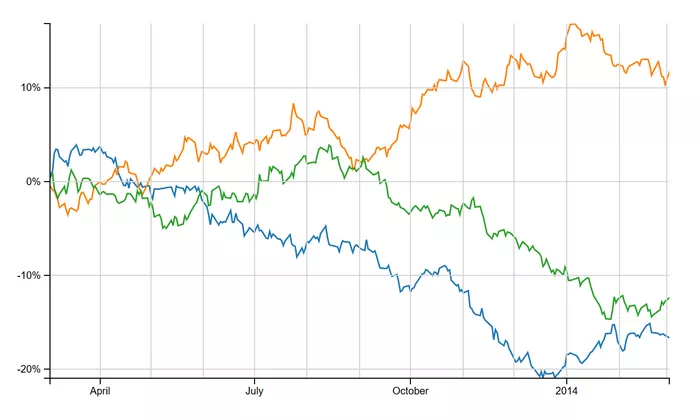Investing in stocks is one of the most popular ways to build wealth over time. Typically, when an investor sees their stocks rise in value, the natural inclination is to sell and take profits. However, this approach might not always be the best strategy for everyone. The idea of profiting from stocks without actually selling them is an attractive concept for many investors, especially those who want to maintain long-term exposure to their investments. This article will explore several strategies that allow investors to take profits from stocks without selling, helping you maximize your financial returns while retaining ownership of your assets.
Understanding the Need to Take Profits Without Selling
Before diving into the various methods of taking profits from stocks without selling, it’s essential to understand why an investor might choose this approach.
Tax Considerations: In many jurisdictions, capital gains taxes are incurred when you sell an asset. By holding on to your stocks and profiting in ways other than selling, you may defer or even avoid paying taxes.
Maintaining Long-Term Exposure: Some investors wish to retain ownership of their stocks for long-term growth. Selling means losing exposure to future gains, which might not align with their investment strategy.
Avoiding Market Timing: Predicting the right time to sell can be challenging, and selling too early could result in missed profits. Some investors prefer to extract value from their investments without the risk of mistiming the market.
Retaining Ownership of Dividend Stocks: Stocks that pay dividends provide an ongoing income stream. By holding on to these stocks, investors can continue receiving dividend payments while profiting in other ways.
In light of these considerations, let’s explore the strategies that allow investors to profit from stocks without selling them.
1. Using Dividends to Take Profits
One of the simplest and most common ways to take profits from stocks without selling them is by receiving dividends. Many companies distribute a portion of their earnings to shareholders in the form of dividend payments.
What are Dividends?
Dividends are cash payments made to shareholders, typically on a quarterly basis. Not all stocks pay dividends, but many well-established companies do. Dividend stocks are often considered less risky and more stable, making them a popular choice for long-term investors seeking regular income.
How Dividends Can Benefit You
Regular Income Stream: For investors who want to generate passive income, dividends can be a reliable source of cash flow without having to sell the underlying stocks.
Reinvestment Opportunities: Investors can reinvest their dividends to buy more shares of the stock, allowing their wealth to compound over time.
Tax Efficiency: In some jurisdictions, qualified dividends are taxed at a lower rate than short-term capital gains, making them a more tax-efficient way to extract profits.
How to Maximize Dividend Income
Dividend Reinvestment Plans (DRIPs): These plans allow you to automatically reinvest your dividends to purchase more shares of the same stock. By reinvesting, you take advantage of compounding, which can boost your long-term returns.
Choose Dividend Aristocrats: These are companies with a long history of increasing their dividend payouts. Investing in these stocks can help you maintain a stable income stream, while also benefiting from long-term stock price appreciation.
2. Using Covered Calls
A covered call is another popular strategy that allows investors to take profits from stocks without selling them. This involves selling a call option on a stock you own.
What is a Covered Call?
A call option gives the buyer the right (but not the obligation) to purchase a stock at a predetermined price (strike price) before a specific date (expiration date). When you sell a call option, you are agreeing to sell the stock at the strike price if the option is exercised by the buyer.
How Covered Calls Work
Income from Premiums: When you sell a call option, you receive an upfront payment, known as the premium. This provides immediate income, even if the stock price does not rise to the strike price.
Selling the Option: If the stock price stays below the strike price, the option expires worthless, and you keep both the premium and the stock.
Capped Profit Potential: If the stock price rises above the strike price, you may have to sell your shares at that price, capping your profit. However, you still benefit from the premium received from selling the option.
When to Use Covered Calls
Moderate Price Expectations: Covered calls are best suited for stocks that you believe will not experience significant price increases. This strategy works well if you expect the stock to trade sideways or increase slightly.
Generating Income: If you’re looking to generate extra income from a stock without selling it, covered calls can be an effective strategy.
3. Borrowing Against Your Stock Holdings (Margin Loan)
Another way to take profits without selling stocks is by borrowing against the value of your stocks through a margin loan. This strategy allows you to leverage your existing investments to access liquidity without needing to sell them.
What is a Margin Loan?
A margin loan is a loan you take out from a broker or financial institution using your stocks as collateral. The amount you can borrow depends on the value of the stocks in your portfolio, as well as the brokerage’s margin requirements.
How Margin Loans Work
Borrowing Funds: You can borrow a percentage of the value of your stock portfolio, typically ranging from 30% to 70%, depending on the broker and the type of securities you hold.
Interest on the Loan: Margin loans are subject to interest charges, which can vary. It’s important to factor in the interest costs when using this strategy.
Repaying the Loan: The loan is repaid when you sell your stocks or when you deposit more funds into your account. If the value of your stocks declines, the broker may require you to deposit more funds to maintain your loan.
Risks of Margin Loans
Margin Calls: If the value of your portfolio drops significantly, the broker may issue a margin call, requiring you to deposit more funds or sell assets to cover the loan.
Interest Costs: The cost of borrowing can add up, especially if you hold the loan for an extended period.
Potential for Forced Liquidation: If you’re unable to meet a margin call, the broker may liquidate your holdings to repay the loan, resulting in the sale of your stocks at potentially unfavorable prices.
When to Use Margin Loans
Short-Term Liquidity Needs: Margin loans are best suited for investors who need quick access to capital but do not want to sell their stocks.
Stable Market Conditions: It’s important to use margin loans only when you believe the market will remain stable or the value of your stocks will continue to rise.
4. Using Stock Buybacks
Some companies offer buybacks as a method of taking profits without selling. While this strategy doesn’t provide immediate cash, it can result in a higher stock price due to the reduction in the number of outstanding shares.
What Are Stock Buybacks?
A stock buyback occurs when a company repurchases its own shares from the open market. This reduces the number of shares in circulation, increasing the value of remaining shares and providing indirect profits to shareholders.
How Buybacks Work
Increased Earnings Per Share (EPS): As the number of outstanding shares decreases, earnings are spread across fewer shares, potentially increasing EPS and boosting the stock price.
Shareholder Benefit: Shareholders benefit from stock buybacks because their remaining shares become more valuable.
Long-Term Growth: Buybacks can signal that a company is confident about its future prospects, which can increase investor sentiment and drive up the stock price.
When to Consider Stock Buybacks
Strong Company Fundamentals: Look for companies with strong cash flows and solid fundamentals that are more likely to engage in buybacks.
Long-Term Investment Strategy: Stock buybacks are a long-term strategy that may not provide immediate cash but can boost the value of your investment over time.
5. Dividend Reinvestments and Stock Splits
Dividends and stock splits offer additional ways to profit from stocks without selling them. While stock splits do not directly put cash in your pocket, they can make the stock more attractive to potential buyers, which may increase the stock price.
Dividend Reinvestment Plans (DRIPs)
As discussed earlier, DRIPs allow you to automatically reinvest your dividends to purchase more shares. This can help you compound your returns over time without needing to sell your stocks.
Stock Splits
A stock split occurs when a company divides its existing shares into multiple shares. While stock splits do not affect the value of your investment, they can make shares more affordable, which could attract new investors and potentially drive up the price over time.
Conclusion
There are several ways to take profits from stocks without selling them. Whether through dividends, covered calls, margin loans, or stock buybacks, these strategies allow investors to generate income and liquidity from their investments while maintaining exposure to future growth.
However, each method has its own set of risks and considerations. Understanding these strategies and carefully evaluating the costs and benefits can help you make the most of your stock holdings without having to sell them. Whether you’re looking for a reliable income stream, leverage, or simply a way to generate profits while maintaining long-term exposure, the right strategy can help you achieve your financial goals.
Related topics:
































